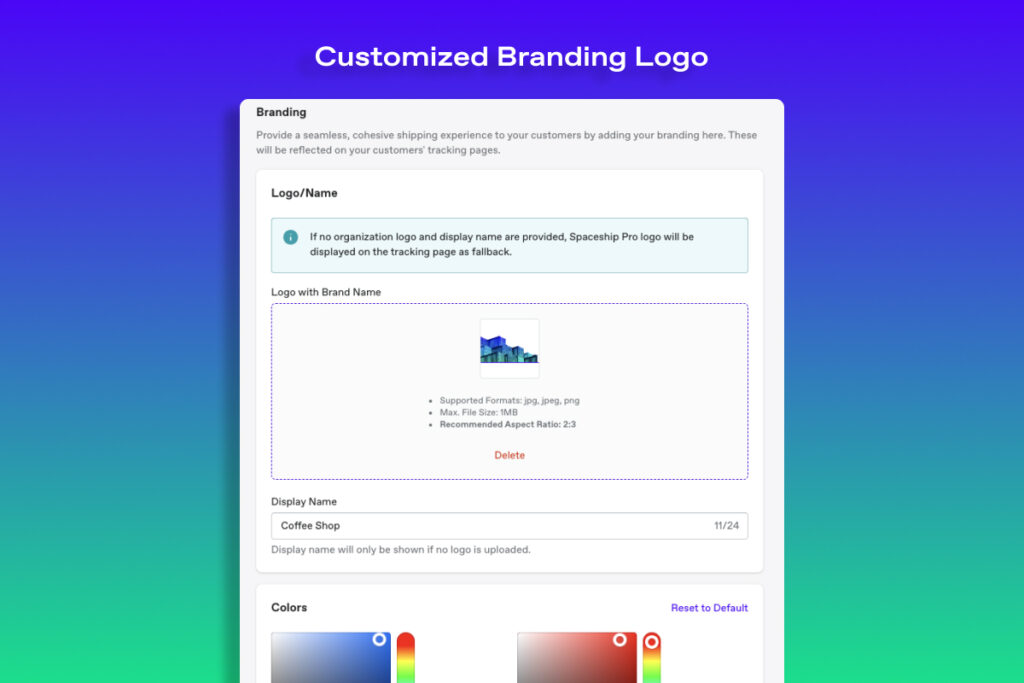
Fashion’s New Focus: Building Brands, Not Just Buzz
The fashion world is rarely predictable, but the current shift feels seismic. Forget chasing fleeting trends with laser-targeted ads – brand building is the new runway darling. A whopping 71% of fashion leaders, according to the BoF-McKinsey survey, plan to prioritize it in 2024, compared to 46% for performance marketing. This isn’t just a trend; it’s a revolution.
Why is performance marketing vs brand marketing now a debate? Today’s consumers crave connection, not manipulation. They’re tired of feeling like pawns in a conversion game. They want brands with stories, values, and identities that resonate with their own. Remember that sustainable label you discovered, perfectly aligning with your eco-conscious ethos? Instant brand loyalty, born.
Yes, it demands patience and finesse. But the rewards are undeniable. A strong brand attracts devoted customers, inspires employees, and even unlocks a competitive edge. It’s like that vintage Chanel suit that never goes out of style – an enduring investment that keeps on giving.
Performance Marketing vs Brand Marketing
| Feature | Performance Marketing | Brand Marketing |
| Objective | Generate immediate leads, sales, conversions | Build brand awareness, loyalty, reputation |
| Focus | Short-term results, ROI tracking | Long-term brand recognition, emotional connection |
| Metrics | Clicks, conversions, cost per lead, return on ad spend (ROAS) | Brand awareness, brand sentiment, customer lifetime value (CLTV) |
| Tactics | Search engine marketing (SEM), pay-per-click (PPC) advertising, affiliate marketing, email marketing | Social media marketing, influencer marketing, content marketing, public relations |
| Timeframe | Days, weeks, months | Months, years, decades |
| ROI Measurement | Direct (sales generated from campaigns) | Indirect (increased brand value, customer loyalty) |
| Target Audience | Consumers actively searching for specific products or services | Broad audience with potential interest in the brand |
| Budget Allocation | Typically higher due to emphasis on immediate results | More flexible, often a mixture of short-term and long-term investments |
| Campaign Adjustments | Frequent A/B testing and optimization based on real-time data | Adjustments based on brand sentiment, market trends, and long-term goals |
| Content Style | Data-driven, promotional, transactional | Emotionally-driven, informative, storytelling-focused |
Why Brand Marketing Matters
- Standing out in a crowded market: A strong brand helps you differentiate yourself from competitors and capture attention.
- Building trust and loyalty: Consistent branding fosters trust and creates a feeling of familiarity with your audience, leading to repeat business and customer loyalty.
- Communicating your values and story: Your brand tells your unique story and what makes you stand for, allowing you to connect with customers on a deeper level.
- Influencing purchase decisions: Branding influences how customers perceive your products or services, making them more likely to choose you over competitors.
- Enhancing brand value: A strong brand is an asset that can be leveraged to increase your company’s overall value and attract investors.
- Boosting employee morale: A clear and inspiring brand identity can motivate employees and foster a sense of pride in their work.
- Providing a competitive advantage: A well-defined brand gives you a clear strategic direction and helps you navigate market changes effectively.
Which Comes First, Marketing or Branding?
Performance marketing vs brand marketing is a classic chicken-and-egg question in the business world. While some argue that branding must lay the groundwork before engaging in targeted marketing efforts, others believe performance marketing can help establish brand identity through data-driven insights. Ultimately, the answer depends on several factors:
- Brand maturity: For new brands, establishing a strong brand foundation through targeted audience research, defining core values, and crafting a clear brand message might be crucial before launching performance campaigns. Established brands, however, might leverage performance marketing to refine brand positioning based on real-time data and customer feedback.
- Industry and market: In highly competitive markets with low brand awareness, performance marketing tactics like SEO and paid advertising can drive initial traffic and lead generation. In niche markets with strong brand loyalty, brand-building activities like influencer marketing and content creation might be more effective.
- Overall goals: If your primary focus is short-term sales and ROI, prioritizing performance marketing tactics might make sense. But if you aim for long-term brand recognition and customer loyalty, a brand-first approach could be more beneficial.
Learn more: eCommerce Strategy 101: From Marketing to Logistics, Everything You Need to Know
Striking the Balance: Performance Meets Brand
The ideal situation is often not an either/or scenario. Integrating both performance and brand marketing strategies can create a synergistic effect, amplifying your overall marketing efforts. Here are some ways to achieve this:
- Brand-oriented performance campaigns: Craft performance marketing campaigns aligned with your brand identity and messaging. Use relevant keywords and visuals, and ensure landing pages and creatives reflect your brand voice and values.
- Performance-driven brand content: Leverage valuable data from performance marketing to inform your brand storytelling. Track audience interests and engagement to curate content that resonates with your target demographics.
- Cross-channel integration: Employ a unified marketing approach across channels. A seamless experience where performance ads lead to branded content and vice versa strengthens brand association and enhances customer conversions.
- Measuring combined impact: Develop metrics to track the combined impact of your branding and performance efforts. Go beyond traditional ROI metrics and consider brand awareness, sentiment, and long-term customer value to evaluate the overall success of your integrated strategy.
Spaceship Blasts Off with Branded Shipping – Beyond the Tracking Page
Forget generic delivery notifications! Spaceship is helping you to enhance your branding execution with branding setup on tracking pages. This isn’t just about logistics; it’s about weaving brand magic into every step of the customer journey.
Learn more: Build Brand Love with the Branded Tracking Page – Spaceship Pro Products Updates
Instead of the usual bland tracking information, your customers are greeted by your brand’s logo and colors that consistent with your brand website. Every update – from shipment confirmation to out-for-delivery – becomes a mini-brand experience, reinforcing your connection and building anticipation.
In the future, Spaceship will offer a whole constellation of customization options to let brands truly own their shipping journey. Think:
- Logo & Color Scheme: Infuse your brand identity into every notification, making it instantly recognizable and memorable.
- Branded Messages: Inject personality and voice into tracking updates, turning them into mini-conversations with your customer.
- Custom Landing Pages: Design a bespoke landing page for your tracked packages, further extending your brand experience beyond the initial email.
- Integrated Offers & Promotions: Leverage the captive audience during delivery anticipation to subtly introduce new products or special offers.

The benefits are tangible and multifaceted:
- Enhanced Brand Awareness: Every notification reinforces your brand identity, increasing recognition and recall.
- Customer Engagement: Turning the mundane into brand experiences builds positive associations and keeps your customers invested.
- Loyalty & Advocacy: A delightful shipping experience creates brand ambassadors who share their positive stories with others.
- Increased Conversion Rates: Subtly weaving promotional messages during delivery anticipation can nudge customers towards further purchases.
Spaceship’s branding solution isn’t just a cool feature; it’s a strategic move that bridges the gap between performance marketing vs brand marketing. It proves that even seemingly functional aspects of online shopping can be leveraged to build brand love and customer loyalty.
Connect with Spaceship.
Get free trial to experience hassle-free shipping.
The Future of Fashion Marketing: A Glimpse Beyond the Horizon
As performance marketing vs brand marketing tango on the digital runway, the future promises exciting innovations that will blur the lines between the two, creating a symphony of engagement and conversion.
Predictive marketing will take center stage, leveraging AI and data analysis to anticipate customer desires and deliver personalized experiences that feel like magic. Imagine curated product recommendations that appear before you even know you need them, or targeted ads that whisper about the perfect accessory for your next outfit. It’s about knowing your audience so well, you become their sartorial soulmate.
Omnichannel integration will rise to new heights, seamlessly blending online and offline touchpoints into a unified brand journey. Picture your in-store experience mirrored on your phone, with AR try-ons, personalized recommendations based on past purchases, and loyalty rewards that transcend physical walls. It’s about making every interaction, virtual or tangible, an extension of your brand’s story.
Technology will become the invisible thread weaving storytelling and conversion together. Think chatbots that offer personalized styling advice, interactive product pages that tell the garment’s journey from farm to fabric, or immersive virtual reality experiences that transport customers to the heart of your brand’s world. It’s about using technology to bridge the gap between aspiration and reality, making brand connection tangible and experiential.
But amidst the technological advancements, one thing will remain constant: the importance of authenticity. In a world saturated with algorithms and pixels, consumers crave brands with genuine voices, transparent practices, and values that resonate with their own.
So, as you navigate this evolving landscape, remember the power of your story. Be transparent, be human, and let your brand values shine through every interaction. Use technology as a tool to amplify your message, not replace it.
The future of fashion marketing is one where performance marketing and brand marketing dance hand-in-hand, fueled by innovation and guided by authenticity. It’s a space where data meets desire, technology weaves stories, and brands become more than just retailers – they become trusted companions on the journey of self-expression. So, embrace the change, own your voice, and get ready to write the next chapter in the captivating story of fashion marketing.
The Pitfalls & Pearls of Performance Marketing vs Brand Marketing
Fashion’s marketing scene is shifting sands, and even with the perfect blend of performance marketing and brand marketing, challenges are inevitable. Let’s explore the hurdles to brace for and the hidden gems to unlock along the way.
Challenges:
- Maintaining brand consistency: Juggling targeted campaigns with brand storytelling can lead to inconsistencies, confusing your audience. Think a polished Instagram feed suddenly bombarded with discount code blasts.
- Data privacy concerns: Tracking customer behavior for personalized experiences must balance effectiveness with respecting their privacy. Imagine using someone’s purchase history to send personalized ads for items they confided in friends about disliking – awkward!
- Attribution woes: Measuring the impact of a multifaceted campaign can be tricky. Who gets the credit when a customer is lured by a targeted ad, convinced by your brand story, and finally converted by a special offer?
Pearls:
- Testing and tweaking: Embrace experimentation! Track results, analyze customer behavior, and adjust your approach constantly. Think A/B testing different ad creatives, monitoring which brand stories resonate most, and fine-tuning your targeting parameters.
- Transparency and trust: Be upfront about your data practices, prioritize customer control over their information, and build trust through authentic communication. Imagine having a clear privacy policy, offering easy opt-out options, and using humor and transparency to explain personalized recommendations.
- Holistic measurement: Look beyond traditional metrics! Consider brand sentiment, customer engagement, and long-term loyalty alongside conversion rates. Imagine tracking positive mentions on social media, measuring the rise in email open rates after brand-focused campaigns, and celebrating repeat customers as a testament to brand love.
Remember, navigating this terrain is like mastering a couture gown – careful adjustments are key to achieving a flawless fit. So, stay agile, prioritize transparency, and embrace the holistic view. By recognizing the challenges and seizing the opportunities, you can transform your performance + brand blend into a masterpiece that wows the audience and secures your place as a fashion marketing icon.








